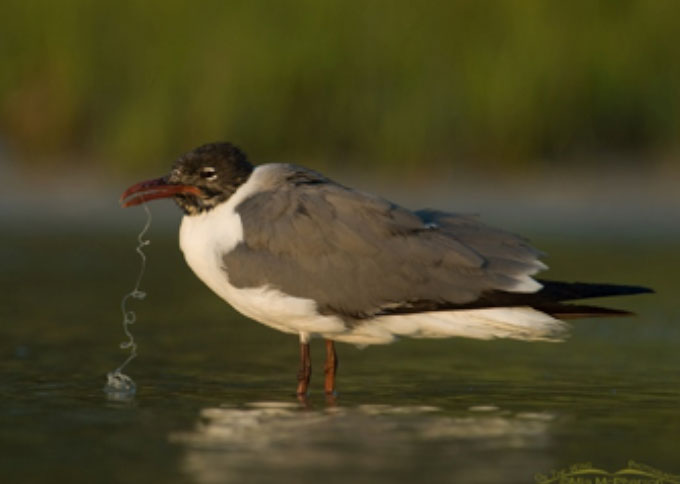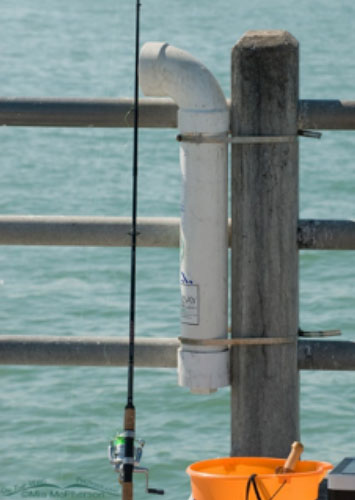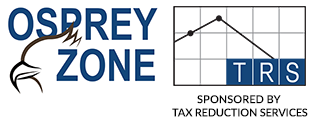Fishing Line Fail!
By Sheryl Goldberg
MS, Environmental Policy and Sustainability Management
The use of technology has given us a rare glimpse into segments of nature normally obscured from our reach. This has allowed us to witness firsthand how our actions, as consumers of the earth, are often the source of unintended consequences. Our entangled osprey chick had the fortunate privilege to be linked to Ospreyzone, otherwise her struggle would have been a silent one destined for an ill-fated outcome. With the rapid growth of osprey nests on our magnificent North and South shores, we must ask the question: How many osprey’s are destined to suffer in silence due to our carelessness?
The following provides some facts about monofilament line, as well as ways that we, as loving conscientious bird observers, can take a proactive approach toward protecting our adored birds.
Monofilament fishing line is composed of strong plastic fibers, typically nylon, made to resist breakage and erosion. As true of all plastics, biodegradation does not occur. Fishing line finds its way into the environment when a hooked line becomes stuck, or snagged, underwater. Often the line will break, or needs to be cut free. Fish can also break the line through force or bite. Wind gusts can blow improperly and properly disposed line, and entanglement from miscasting are also common ways fishing line becomes a threat to our wildlife.
Due to its thin and often clear composition, monofilament line is difficult for birds to detect. They may become entangled in the line causing injury and disability. This can lead to drowning, strangulation, amputation, and/or starvation.

Photo Credit: Permission generously given by Mia McPherson’s Photography http://www.onthewingphotography.com/
What can we do to help?
If you enjoy fishing, be conscientious of your line! Be sure your line is strong enough to carry the weight of your potential catch. If line breakage occurs, make the extra effort to recover as much of the lost line as possible. Note the age of your line; older line is more vulnerable to breakage and should be replaced. Discarded line should be cut into short 6-12” pieces. Be mindful of your surroundings when casting to avoid miscasting into a tree!
Volunteer at local beach/park clean ups. Or organize one yourself! If you happen across poorly discarded fishing line on a beach, fishing area, or anywhere- don’t step over it! Pick it up and dispose of it properly.
If you encounter an injured bird, reach out to your local animal rescue group, such as Suffolk County’s Evelyn Alexander Wildlife Rescue Center (http://www.wildliferescuecenter.org/birds.html) 631-728-WILD, or Save the Animal Rescue (http://www.savetheanimalsrescue.org/) 631-736-8207. In Nassau County, Volunteers for Wildlife (http://www.volunteersforwildlife.org/) 516-674-0982 rescues and rehabilitates injured birds.
Share with others what you know about fishing line use and consequences of line breakage.
Speak out! Monofilament line will not get processed at local community recycling centers, so don’t put it in your recycle bin. Some places provide monofilament recycle containers in popular fishing spots. Contact local legislators to petition these receptacles be provided in all Long Island fishing areas. Check out Going Coastal, http://www.goingcoastal.org/fishingline.html. They help with the process of installing receptacles.

Photo Credit: Permission generously given by Mia McPherson’s Photography http://www.onthewingphotography.com/
Ask local stores, including bait and tackle shops, to participate in monofilament recycling programs. It’s easy! Stores provide drop off boxes to collect donated pieces of monofilament line brought in by members of the community and mail it to a recycling center. Going Coastal (website above) can assist with this process and they partner with organizations that turn recycled monofilament line into underwater habitats!

Leave A Comment